





Thise December Issue is influenced by the winter season. Our student survey (pg. 22-23) and cover are all about gift giving, there’s a winter starter pack, and we've highlighted winter sports. This issue we also tried to encompass all the emotions that come with the holidays. There are the classic holiday traditions, no matter what you celebrate. Yet the issues we worry about don’t just go away when the holidays arrive. So, we continue to put in serious and hard hitting stories such as "Can we Cannabis" (pg. 5) and "Crowded Caseload (pg 15). The world still revolves even when it gets colder and winter break draws nearer.
What I think truly differentiates any random day to the days during the holiday season is family. This time of year brings forth the love we have for each other. It’s all about showing your appreciation for others and also being appreciated.
So, before I close, I want to share with you how amazing the Harbinger staff has been this semester. We’ve had stressful deadlines and long work nights sometimes, but there’s not one person on staff who isn’t willing to help. When others are struggling with content or just personally struggling, the staff jumps at the opportunity to help.

To the Harbinger staff, you never fail to amaze me and warm my heart. I genuinely think we’re a family. One that’s had its struggles nevertheless; but one that cares and loves so openly. Thank you for this semester. I cannot wait to see how we grow in the new year.
DeMarco, Editor in Chief Mary DeMarco, Editor in Chief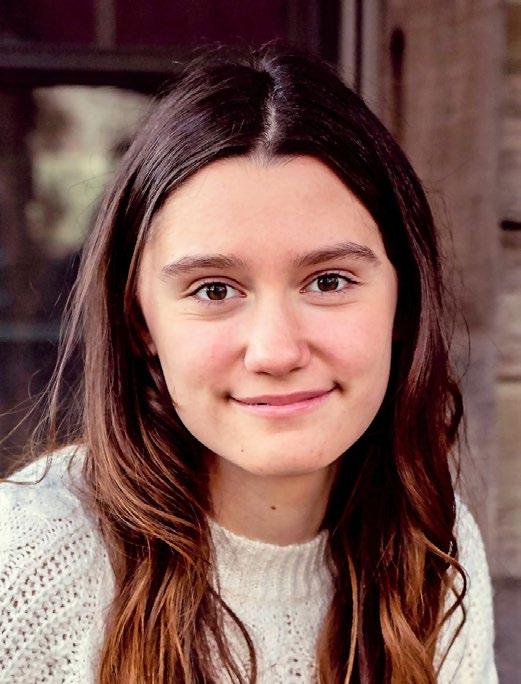
Staff: Josie Brackett Lauren Burch Amelia Meyers Georgianna Moreland Greta Reed George Waller
Over break, many expect to spend time with family. This can be a blessing and a curse all wrapped into one. It’s great to see your loved ones, but sometimes it’s also suffocating having everyone in one room.
Family can be more than just out-of-town cousins or an uncle you haven’t seen since you were little. Family is made of the peo ple that love you for all your good and bad qualities. Family members can be anyone who makes you feel like you’re breathing clearly for the first time after a cold. They’re the people that stick with you even when you’re agitated and quick to anger. They’re the people you would drop what you’re doing to help. Family isn’t just genetic; it’s the people you choose.
Although the holidays can be stressful and at times it becomes difficult to fully appreci ate your loved ones, we must remember that people aren’t permanent. Relationships can fizzle out; people pass away; it’s easy to lose touch with the people you don’t see every day.
Sometime during your break, take a minute to yourself to just look at the people around you. Appreciate the moment and the people you rely on. While getting and giving gifts is wonderful, often the best gift is words. Tell the ones you love why you love them. Tell them what you appreciate about them and how they affect you. That appreciation carries more value than any item ever could.
The mission of the Harbinger is to provide timely, relevant, and interesting content, while handling topics with respect and objectively. Harbinger aims to reflect the diverse nature of the student body of ZCHS by including those of all walks of life in the publication. The Harbinger serves as a public forum and invites letters to the editor and communication from others. The Harbinger is student-run and opin ions in the magazine do not necessarily represent those of ZCHS or Zionsville Community Schools.
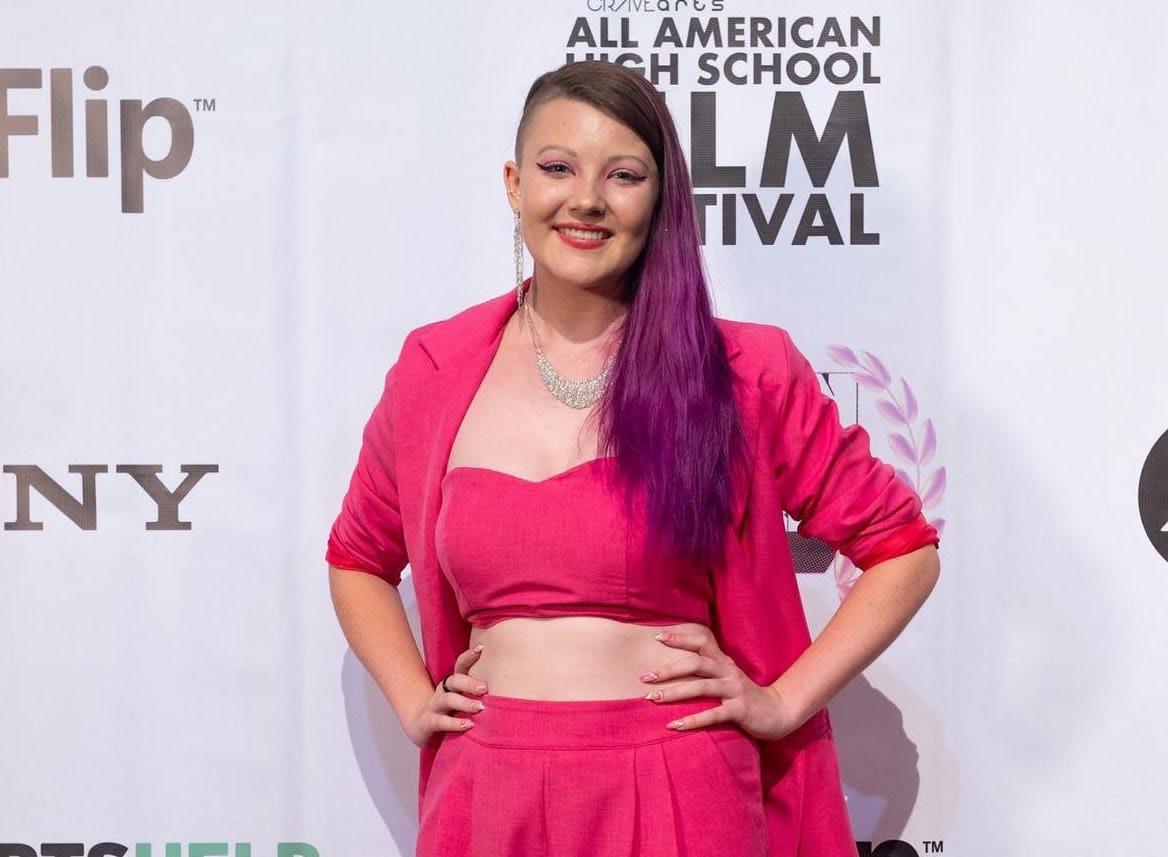

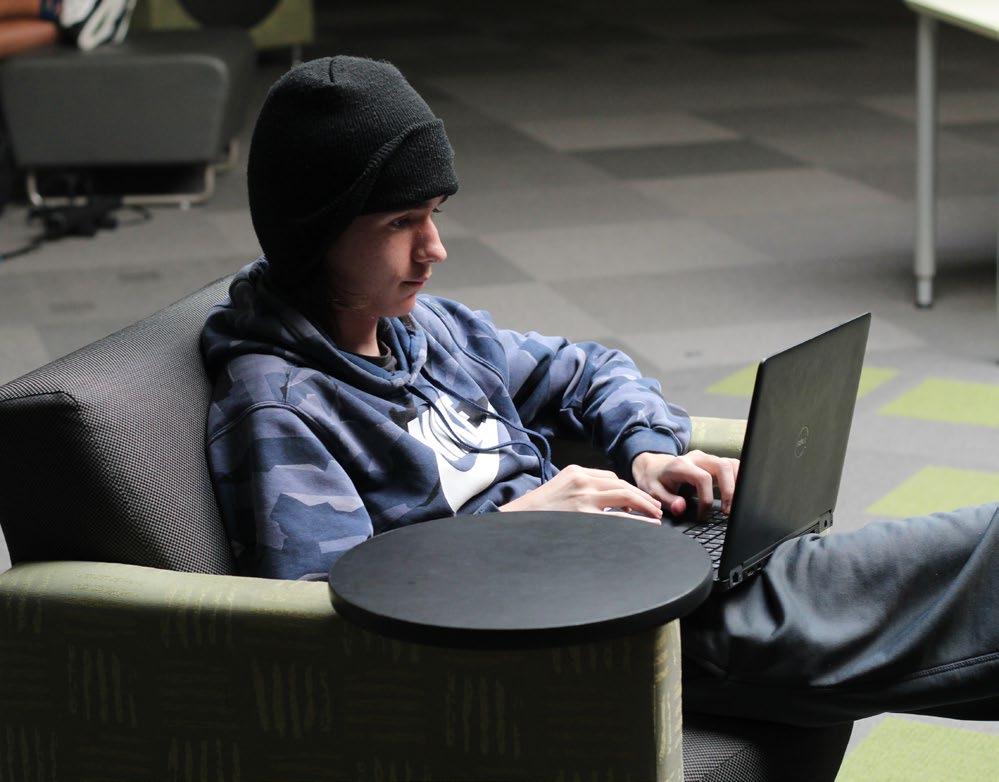
Senior Dominic Marchese caught COVID-19 in late Oc tober and missed five days of school. He shares his experi ence and advice for other stu dents.
With the stress of frantic studying and final exams brought by the end of the semester, it’s easy to forget that December is also typically the beginning of peak flu season—at least, easy to forget until you find yourself sick, deciding between staying home and going to school.
two other respiratory infections.
To keep yourself and the people around you healthy, the CDC recommends vacci nation against flu and COVID-19, washing your hands, avoiding close contact with peo ple who are sick or if you are sick, covering sneezes and coughs, and avoiding touching your eyes, mouth, and nose.
“I didn’t do much work while I was sick, so it was hard having all the stuff I missed thrown at me all at once. It was pretty tough catch ing up on all of the assignments I missed and then having to take the tests I missed too.”
Samina Bhumbra, medical director of infection prevention at Riley Hospital for Children, said this year’s influenza season is expected to be much worse than in previous years. Doctors saw flu cases in the U.S. as early as October.
“Relative to the pattern of where we usually are for flu season at this time of the year versus right now, it is an unexpected uptick,” Bhumbra said.
According to the Centers for Disease Control and Prevention, influenza activity has increased earlier than usual through out the country. And on top of influenza, COVID-19 cases are also expected to rise in the next few months.
“It’s up to the individual to help protect those around them,” Bhumbra said.
If students have to miss school due to an illness, guidance counselor Brooke O’Mara recommends contacting teachers to find out what was covered in class and how to make up the content.
“It’s always best to talk directly with teachers to create a plan for getting caught up,” O’Mara said. “It is important to ask teachers what to prioritize.”
Greg Kirkham, another counselor, added that using a planner, working ahead when possible, and utilizing study hall and MAP time can help students balance their workload.
“I try to get all my schoolwork done as soon as I get home so I can have a clear line between my school day and my free time.”
Omicron has been the main COVID-19 variant circulating in the U.S. for almost a year, according to Bhumbra. Because of vaccination and previous infections, most people who caught Omicron experienced a milder version of the virus.
“For the most part, even though we saw a lot more people get infected, relatively speaking, the number of hospitalizations really did go down,” Bhumbra said.
But COVID-19 is an RNA-based virus, which tend to make more mistakes during replication and therefore create more variants. Bhumbra said two of the newest variants could lead to more hospitalizations than the U.S. has recently seen.
According to O’Mara, counselors can help students communicate with their teach ers during extended absences and help them catch up once they return to school.
“Counselors are also willing to talk with any student who might be feeling anxious or overwhelmed,” Kirkham said.
Ultimately, each student has to decide for themselves how to best balance school and staying healthy.
“I recommend that students create a routine that includes all necessary tasks, including a bedtime that allows for plenty of sleep,” O’Mara said.
“I’d say that if you feel well enough you should try and keep up with your classes through Canvas so you don’t have the added stress of them all when you come back.”
“There’s concern that these versions of the virus may have qualities that lead to them being better at avoiding our immune system,” Bhumbra said.
According to Bhumbra, hospitals are also treating a high number of patients with enterovirus and respiratory syncytial virus,
As finals approach, many students may debate between staying home or powering through their illness at school.
Bhumbra encourages students to put their health first.
“I think there’s a lot of pressure to be at school,” Bhumbra said. “But also I think they need to know it’s okay to stay at home if they’re not feeling well.”
What was the most challenging part of returning to school?
How do you balance schoolwork and staying healthy?
Do you have any tips for other students who get sick and have to stay home?
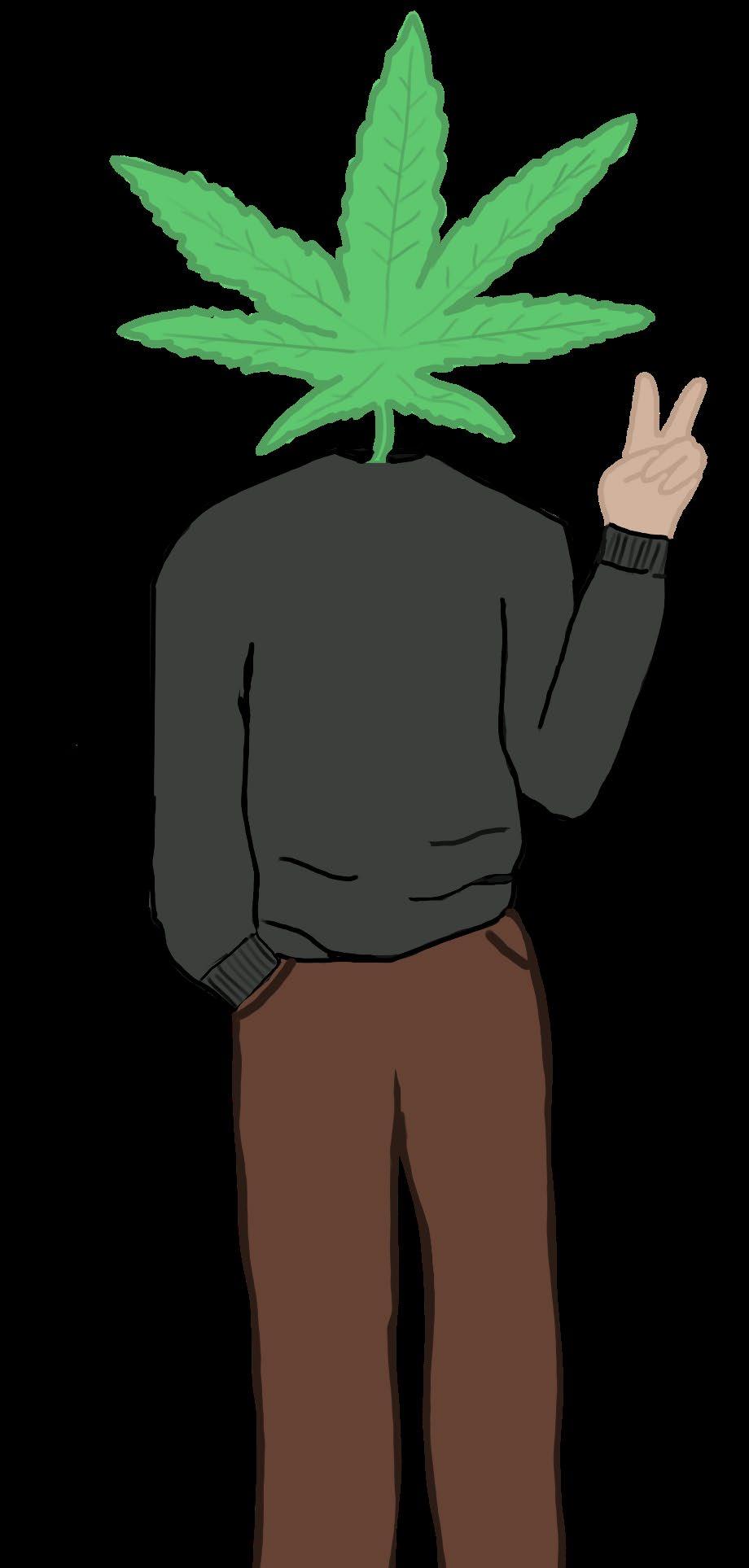 By Adanna Mbanu, Copy Editor
By Adanna Mbanu, Copy Editor
With voters in Missouri and Maryland voting to legalize mar ijuana in November’s election, discussion of legalization in Indiana has been renewed. Indiana’s bordering states, Illinois, Michigan, and Ohio, have legalized marijuana. Currently, Indiana is one out of 11 states in America that haven’t legalized marijuana for either recreational or medical purposes. The only use of the substance that’s currently legal is CBD products with less than 0.3% THC (Tetrahydrocannab inol). According to Indiana state law, if caught with anything above that percent, a misdemeanor or felony charge would be a likely consequence.
Although the legalization of marijuana
is a controversial issue in the state, many residents are pushing for legalization to occur.
“I personally think that [marijuana] is something that’s safer than alcohol, and I think that if alcohol is permitted to be sold locally everywhere, weed should be able to be sold,” junior Mia Herrera said. “Not only because it’s safer, but because it has medical benefits that alcohol doesn’t provide.”
House Bill 1311 was introduced to the Indiana Statehouse in January. According to the Indiana General Assembly, the passing of this bill would have legalized cannabis and established “a procedure for the lawful production and sale of cannabis in Indi ana.”
However, HB1311 was vetoed on March 9, after only making it past the first House reading, making legalization unlikely to occur.
State Representative Vanessa Summers, co-author of HB1311, expressed her disap pointment in the veto and how important the decriminalization of cannabis should be to The Interim Study Committee on Public Health, Behavioral Health, and Human Services on Sept. 21.
“Indiana is light-years behind our neighboring states when it comes to bolstering our economy with cannabis sales, but right now, decriminalization of cannabis should be a priority in our state,” Summers said.
But to some representatives, decriminal ization or legalization isn’t a top priority. Instead, representatives are focusing on the medical efficiency of marijuana use.
“I continue to believe we need more research about the health impact of marijua na use, and I’ve co-sponsored legislation to begin clinical trials to determine efficiency of medicinal cannabis as a treatment alter native for veterans suffering from PTSD and chronic pain,” Senator Todd Young said.
The history of marijuana consists of ma jor stigmas towards minority groups, more specifically people of color. Herrera said
that these stigmas embedded into Amer ican culture, especially in Republican states, are one of the reasons marijuana has yet to be legalized.
“It’s been going on since the ‘30s when marijuana first came over the border,” Herera said. “It was associated heavily with Mexicans, that’s why it’s called mari- ‘jua na’, to basically insinuate that Mexicans are the people bringing in these drugs. There was always anti-marijuana propaganda that went around and it was used to put people against each other.”
Summers sees the impact of marijuana laws on people of color.
“Black Hoosiers are about 3.5 times as likely as white Hoosiers to be arrested for cannabis despite the fact that usage rates are essentially equal between the two groups,” Summers said. “Decriminalization is a civil rights issue. People should not have their lives destroyed and families should not be broken up because someone got caught with cannabis.”
81% of Hoosiers support the legaliza tion of marijuana, according to ACLU Indiana.
“I think that people should open their minds to more natural solutions to prob lems instead of medicating everything because Big Pharma is a huge problem in our country,” Herrera said. “If we started prescribing medical marijuana to people instead of trying to drug them up on pills to make money, I think that stigmas against marijuana would decrease.”
Indiana lawmakers don’t appear to be close to legalizing marijuana anytime soon.
Testimony in late September was given about legalization, and according to WFYI Indianapolis, “the legislature has been examining the subject for about four years. And the testimony in a legislative study committee this week didn’t differ much from what lawmakers have heard before.”
Graphics by Brooklyn Brown

Girls basketball teams could use an assist. Basketball has fallen to the fourth most popular girls sport by participation nationwide. According to the National Federation of State High School Associations, girls basketball has “lost 19% of its players since 2002.”
Indiana has seen a 38% decrease in partic ipation in girls basketball since 1998, accord ing to the NFSHSA. However, Zionsville assistant coach Bronson Lickliter, who has coached both girls and boys basketball for over 15 years, said the effects on Zionsville basketball so far are limited.
“I don’t think we have noticed [a decline] really, at least at this school,” Lickliter said. “I know that we have a certain number of teams for the lower grades and with that some of those grade levels only have one team. So that seems lower than other schools around here.”
Several forces are driving the national decline in girls basketball players, including the reality that more athletes are sticking to one sport year-round. Other factors include schools adding other sports, which have lured athletes away from the court.
“There are a lot more options now. For a long time it was either this or that. Cheer or basketball. But now there are start ups for girls wrestling. [There are] year long sports now and volleyball is huge,” Lickliter said.
According to NFSHSA, “Track and field,
“Shelby
‘I
- Sports Business Journal
the top sport among girls, grew 10%. Girls volleyball and soccer saw participation increases at 15% and 27%, respectively.”
Varsity player Laila Hull, senior, has played basketball for 12 years, starting in kindergarten.
“Basketball just isn’t for everyone,” Hull said. “Lots of people just fall in love with other things. I know multiple people, includ ing myself, who have quit other sports to focus on basketball so it really just depends on who you are.”
According to the National Federation of State High School Associations, coaches also suggested that some girls view basketball as too difficult, or not “girly” enough, to play.
Junior Faith Leedy has played basketball for 10 years.
“Girls think it’s better to play a sport that’s not a ‘male sport,’” Leedy said.
Hull attributes the decline to an overall lack of interest from fans and the commu nity.
“Low amounts of attention have affected the appeal of girls basketball,” Hull said. “We deserve support as much as the boys do and I think some girls don’t take it as seriously because of it and that can lead to not wanting to play.”
In Indiana, girls high school basketball participation peaked in 1998 with a high of 12,500 players. But in 2019, the number fell to a record low of 7,721, according to
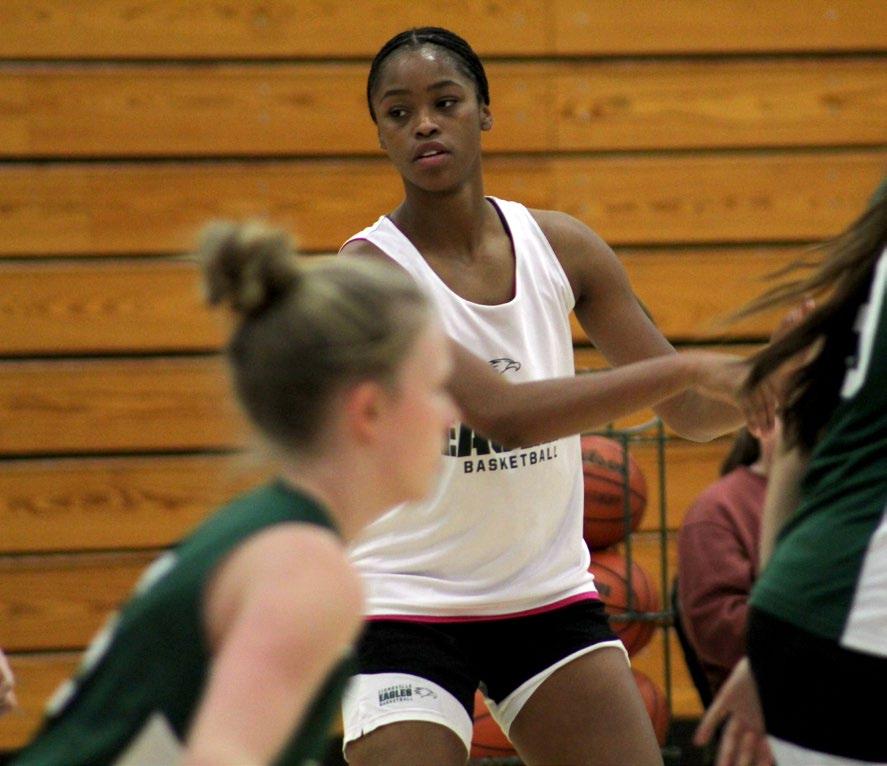
NFSHSA.
Even though the numbers show no signs of rebounding, this decrease hasn’t been noticed as much at Zionsville, according to Lickliter.
“The low numbers are nationally,” he said. “I’m really not that concerned for the state of Indiana for basketball numbers. Because it’s what Hoosiers live and breathe and depending on who you ask I think it is still the biggest sport in Indiana.”
Zionsville coaches and players have taken steps to get girls interested in basketball at a younger age, Lickliter said. The team is currently running a kids clinic for kinder garten through second graders. They also run camps in the fall and in the spring they host a developmental type practice for third through sixth graders
“The more the merrier. We will always have enough room for you. We make it work however it can,” Lickliter said. “The worst thing that can happen is discouraging a child from playing.”
Hull encourages girls to play “even if you don’t think you’re good at it” because of the lessons learned by being a part of the team.
“Basketball is just a really fun sport to play in general,” Leedy said. “Basketball also teaches you many lessons for life and gives you friends that last a lifetime.”
The nation is facing significantly lower numbers of girls basketball players. What about Zionsville?
“Girls basketball participation has dropped 38% in the last two decades.”
-Just Women’s Sports
Gliebe said,
think the big gest reason for girls not participating in basketball, and I know this is silly: It’s not a cute sport.’
“In the first post-pandemic national survey, girls’ bas ketball dropped 7%.”
- The Wall Street JournalSenior Lailla Hull at bas ketball practice on Nov. 21. Photo by Lauren
Burch
Twins Campbell and Emerson Stoner have something in common: they are the only divers returning this season and are helping their team grow. The two sophomores have successfully recruited six more female divers, all new to the sport.

“I asked some of my friends to join and people I knew who were interested in the sport and now our whole team is new this year, minus my sister and I,” Campbell said.
Campbell added that she “learned so much about the sport and myself last year and felt that I had so much left to learn.”
Even though this is only their second year diving, the twins’ extensive background in gymnastics allowed them to quickly progress in the sport.
“I am most proud of starting diving freshman year and picking it up really fast due to my gymnastics background and competing with girls who have been doing diving for 8 plus years,” Emerson said.
With a team of eight, the girls are prepar ing to conquer the season.
“I loved how welcoming everyone was last year and I wanted my friends to get the same experience I did,” Emerson said.
With a welcoming start they continue to work hard to prepare for upcoming competition.
“We always joke around and make fun of each other a little bit but also push each other to the best of our abilities,” Emerson said. “Also, having someone always there makes it so much fun and more comfort able.”
Creating a fun and inclusive environ ment has helped the team find its footing. With more people competing, there are more opportunities to gain points for the swim and dive team as a whole.
“I’m most excited for meets this upcom ing season and to see how the team grows and how everyone competes,” Campbell said.
With a growing team, the twins have created teambuilding activities to bring the divers closer together.
“My favorite team activities have been friends-giving or the end of the year get-to gethers because you get to see your team mates out of the pool and enjoy a nice meal or activity with them,” Emerson said.
The twins have set more challenging
goals and pushed themselves into higher levels of competition.
“Some goals I have for this season in clude upgrading my dives and making it back to sectionals,” Campbell said.
Being twins on the same team can have its challenges, but the Stoners have done their best to overcome them.
“Sometimes it’s difficult due to comparison but for the most part it’s enjoyable to have someone there to push you to achieve skills and try new things,” Campbell said.
Diving has also been a great way for the girls to spend time with each other, which can be difficult with busy high school schedules.
“I think it is more fun to have my sister with me for diving because it gives us time to hangout with each other and grow,” Campbell said.
“We always joke around and make fun of each other a little bit but also push each other to the best of our abilities.”
- Emerson Stoner, 10
The construction materials filling the space make it hard to imagine what it will be like once it is complete, but the time for it to open is rapidly approach ing. Hints of its future can be seen in the white paint and the precise angles of the gathering stair. In less than a month, the new cafeteria will become a central hub of the school.
The cafeteria, a project begun in 2019 after a community referendum, will open after winter break and replace all of the existing cafeterias in the school.
“It will be very unique compared to any other cafeterias that we have in our district,” Food Service Director Jan Swander said.
The cafeteria will be a centralized location for students to eat, ZCS Director of Operations Matthew Doublestein said. It will provide a spacious, modern facility that is more efficient, and has a large amount of natural light built in because of its open concept.
As a dining space,” principal Tim East said, “it’s going to be nice to have our whole community in one spot.”
The spacious cafeteria, able to seat over 800 students at once, will have a variety of seating, including booths, round tables, long tables, and more individual spots, and there will be several different areas available, assistant principal Matt Walter said.

One unique option will be the gathering stair, a carpeted set of steps located at the east end of the cafeteria, where students can choose to sit to eat their lunch.
“It’s going to be a new neat feature, and a different way to dine,” East said. “We also heard a lot from our students about being able to dine outside when the weather’s nice, and I think the courtyard is going to be a welcome surprise to students.”
Another new feature is that there will
be bathrooms right off of the space, and a small coffee shop is expected to be available to students in the near future, East said. The coffee shop will be located in the southwest ern corner of the cafeteria.
“We’re really excited to bring a modern approach that we feel students will find much more enjoyable than the spaces we’ve presently been providing, that were designed decades ago with different needs.” Assistant Superintendent Rebecca Coffman said.
There are ramps down the sides of the space between tiers, and flat access from the northern side of the room, ensuring the space is accessible to all. Other features have also been incorporated to provide both safety and convenience, such as sight lines for safety and the carpet on the gathering stairs.
“When you have different elevation changes, you have to make sure as well as
from a visual perspective, people who are visually impaired also feel changes with their footing,” Coffman said. “As you’re taking any sort of change in elevation, you want to be thoughtful about changing the flooring type.”
Another modern feature of the new caf eteria is the amount of light, designed with Northern exposure for soft but consistent lighting throughout the day.
“There’s going to be a lot of natural light in there,” Walter said. “That whole north wall toward the east end is all glass, and then there’s windows along the top the whole way.”
There will also be a change in how lunch trays are used, Swander said. Instead of a more traditional central tray return, there will be designated locations for students to stack their trays, which will then be taken to be washed. This setup can help reduce the
This new room near the W100 hallway can be used as a gathering space for students. Vice Principal Matt Walter hopes to have this space open in January as well in order to ease traffic congestion. Photo by Mary Demarconew kitchen space (shown above) is where students are serve school lunches. Those involved in the construction of the new cafeteria have planned for this to be the only space students will eat at during

use of disposable trays.
Years of planning have gone into the caf eteria, ensuring it is as safe, welcoming, and efficient as possible.

“It has to be a safe space,” Swander said. “A place where kids want to be, that there’s some privacy, but yet some opportunity to be together in groups.”
Outside of use as a lunch room, Walter says the space is also planned to be used for events such as meetings, team dinners, and perhaps even smaller music performances. Two large projection screens are located on either end of the space, one near the east end, and one near the Performing Arts Center.
The part of the cafeteria near the PAC is expected to function as a gathering space for events held there, with more traditional long tables located there so they can be moved as needed.
“The furniture selections don’t limit us to one single setup, although there will be com ponents of it that will be semi permanent. But there’s all sorts of layers to that as well, to provide a space that can do things as our school grows.” Doublestein said.
As for the current cafeterias, they each have different plans for their futures. Doublestein said the main cafeteria will be renovated into classrooms, the Wedge will remain as a gathering space, and the fresh man cafeteria will be closed until its future is decided. The transition from these cafeterias to the new one will be immediate.
“It’ll probably be a little clunky, because it’s a completely different, brand new thing. But so long as people are patient and give time for everybody to feel it out and figure out where to go and how it all works, I
think it’ll be fine.” Walter said.
The staff hope to have people directing students on the first day once the new cafete ria opens, as everyone adjusts to the change.
Doublestein said he hopes students “can enjoy it as a place to anchor all the other great work and experiences they have throughout the day at high school.”
The lunch. Photo by Mary Demarco
“It’s a really good book series to curl up under a pile of blankets and read, and also reflect on some of the themes in the books like family, community, and overcoming hardship.
“Circle of Magic” by Tamora Pierce
Recommended by Scarlet Gallagher, 12
“Twilight” Recommended by Libby Barron, 10

“My family celebrates Christmas so peppermint reminds me of the holidays and hot chocolate makes me think of winter.”





Peppermint Hot Cocoa Recommended by Sadie Nichols, 10

“I like to make my grandma’s recipe.”
Sugar Cookies, Recommended by Heidi Labar, 10

“The movie radiates cold energy to me.”
“Smoke Signals“ by Phoebe Bridgers


Recommended by Arianna Tussinger, 11
“Sparks” by Coldplay

Recommended by Tess Korte, 11
“Back to December” by Taylor Swift

Recommended by Aniyah Parker, 11
Puffy Winter Coat



Recommended by Lauren Carr, 11
“Let It Go” by Idina Menzel


Recommended by Ethan Tomey, 10
“Telescope” by Cage the Elephant

Recommended by Claire Schlueter, 10
“Good Luck Charlie” on Disney+

Recommended by Eva Branam, 9
“The Night We Met” by Lord Huron

Recommended by Jared Williams, Assistant Principal “Self Control” by Frank Ocean

Recommended by Emily Duncan, 11
“Wintering” by The 1975 Recommended by Maddie Patrick, 12

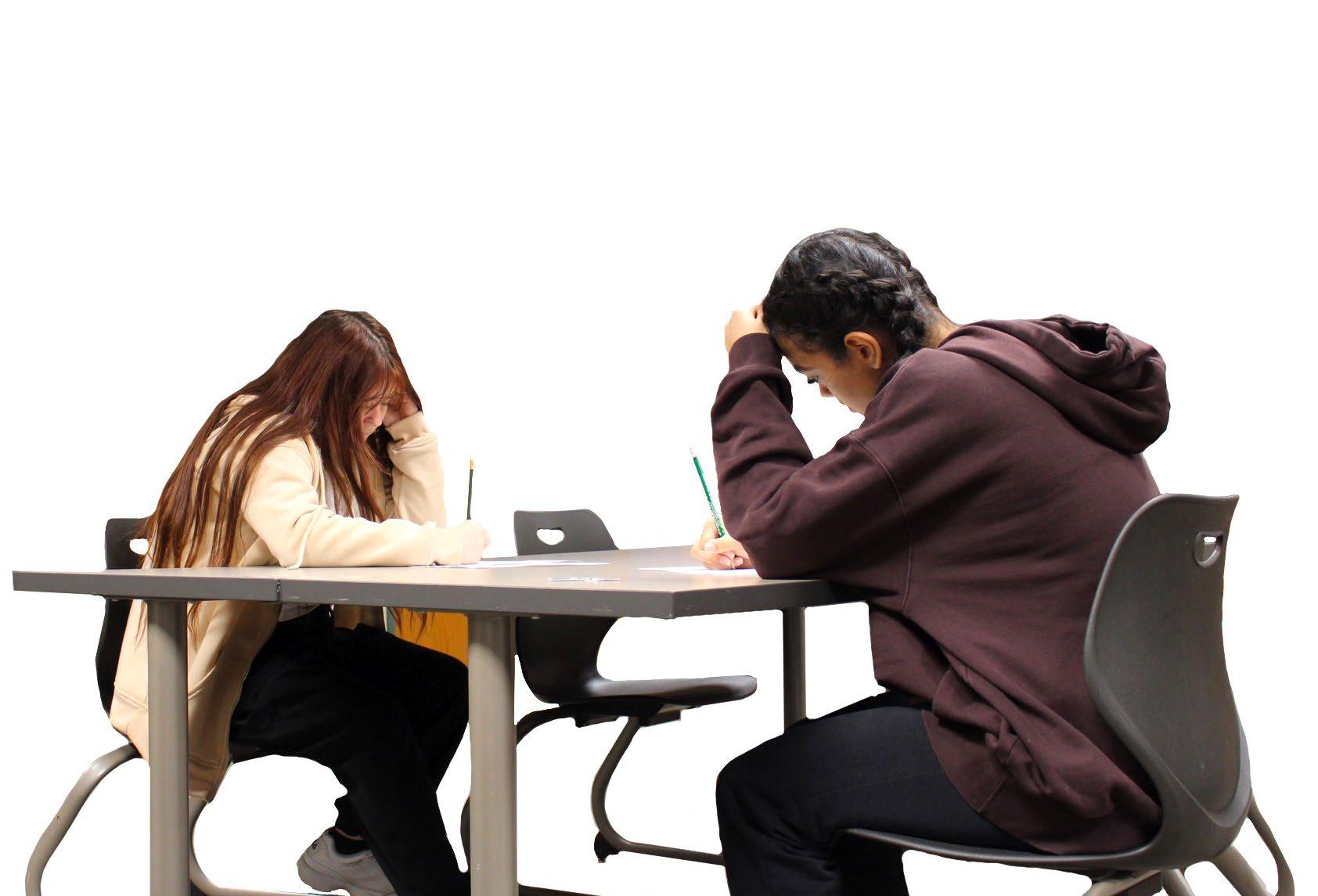 By Adanna Mbanu, Copy Editor and Srinithya Basireddy, Guest Reporter
By Adanna Mbanu, Copy Editor and Srinithya Basireddy, Guest Reporter
Junior Aniyah Parker’s after school routine consists of one thing: studying.
The second she walks through her front door, she prepares herself for a night of work without any chance to decompress. Parker makes her way to her desk, and begins what she predicts to be hours worth of work.
“I wish that teachers would give us more study time and things to study with,” Parker said. “Because most of the time they give you study guides the day before the test and tell you to finish it, and that’s not helpful.”
Questions surround traditional tests and their accuracy in depicting students’ knowl edge on a subject and the stress they add to students’ lives.
“Tests are really targeted for people who can retain information in that short period of time by taking the time after school to study and memorize terms,” junior Arian na Tussinger said. “But they’re not actually learning it, they’re just memorizing. It’s not actually showing what we’ve learned, it’s just a
show of how fast we can retain information.”
Assistant Principal Greg McDaniel said the final-exam method of testing allows stu dents “to prepare for what comes next.”
“If their going to a two year or four year school, they’re going to have to do that,” Mc Daniel said. “If you go to university, at most universities, there’ll be a midterm, a paper and a test itself. Those high stake tests like that were always part of the thought process, helping students prepare for those kinds of experiences.”
Students still continue to feel stressed not only about testing, but also the testing environment.
“I usually feel really stressed out because the environment [when taking tests] isn’t built for everyone. It’s targeted for people who can handle being around so many peo ple at once with a lot of distractions and nois es,” Tussinger said. “A lot of people would get distracted by someone clicking their pen, moving their
paper or laying their head up and down on the desk. Seeing all that in my peripheral vision bothers me so much; I hate it.”
With weekly testing regularly on students’ agendas, one major test is now at the fore front of their minds: the final.
Assistant Superintendent Kris Devereaux is open to options of different forms of a final, as opposed to every student taking a traditional sit-down test.
“I like the thought of embedding things throughout the entire year and not putting so much weight on one single assessment at one given point in time,” Devereaux said. “Especially when 900 things come into play on how you do on [the final].”
AP Psychology Teacher Amanda Har mon has noticed the mental health toll on students.
“I think there’s a lot of pressure put on students to do well on their finals,” Harmon said. “That can make a big dif ference in your final semester grade.
Photo Illustration by Adanna MbanuSince these tests have high stakes, I think that heightens the stress levels for students.”
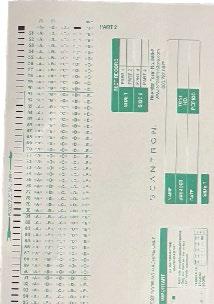
McDaniel said adminis trators “give that free dom to the departments” to choose the type of final. But the amount that the final is worth towards a student’s semester grade does not change.
“Our World Language department does more project based things as opposed to a traditional sit-down final, but that 20% is across the board,” McDaniel said.
Finals week continues to weigh on stu dents’ shoulders.
“Finals week is horrible,” Tussinger said. “They [teachers] all have our tests on the same days, and I know it’s to get you out of school early, but when we start that week everybody is super stressed out. And there’s no quiet space [to study] because everyone is going to study in the same spot.”
For some students, the process of studying for finals is even more strenuous than taking the actual test.
“I’m going to get off track no matter what, because if you give me a lot I’m going to jump back and forth between things. It’s so hard to focus on one thing when you know you have 50 things to do,” Parker said. “One time I made a to-do list during finals and I had 40 things to do in the span of a week and a half.”
Harmon noted, “the standards teachers have for the students here in Zionsville are high, in many cases, higher than you would find in other public schools.”
McDaniel said he monitors “stress levels from the students through the Counseling department.” He added that in the past
they have had student groups come in and discuss their thoughts and concerns.
“We were actually doing some of that type of work; talking to student bodies and focus groups, but COVID kind of slowed us down and we just haven’t brought it back,” McDaniel said. “If any student would like to chat with me, I’d be glad to.”
Although students and the adminis tration tend to have different experiences when it comes to testing, Devereaux said the administration is willing to keep an open mind by listening to student thoughts on testing.
“I just think that student voices are always important where we can get it,” De vereaux said. “I always want to listen to kids. They are the ones who will tell us honestly,
“Student voices are always important where we can get it. They are the ones who will tell us honestly, sometimes brutally honestly, about what is working and what isn’t for them.”
- Kris Devereaux, Assistant Superintendent
“89% of teens say that large scale exams and projects are the main contributor to teen stress.”
- study by MentalHelp in 2016
“Long periods of time spent studying are not as effective as many people might think. Students often forget what they’ve studied during long periods of time. So, studying with quick breaks every 20-30 minutes is more beneficial.”
- Amanda Harmon, Psycholgy teacher
Many have been in the Learning Center for a test retake or make up or for tutoring. However, few students know of, or fully understand, the Customized Learning Program offered at ZCHS. In the Learning Center, students in CLP participate in unique learning pro grams to fit their needs. Allowing students with different needs to pursue their college and career goals, CLP provides a flexible schedule and new and different learning opportunities.
“The Zionsville Community Schools Customized Learning Program is designed to cater to Zionsville Community High School students who have unique education al circumstances,” the ZCHS CLP webpage says. This includes students who are absent regularly because of health problems, study ing abroad, working a job, taking college courses off campus, and more.
“We need to make sure we’re meeting the needs of every student and everybody doesn’t do school the same way,” Direc tor of the Customized Learning Program Nicole Chisley said.
CLP allows students to not only receive their high school diploma, but also achieve other forms of college and career readiness such as lessons in leadership, college and trade school visits, volunteering, and more to help each student achieve their chosen post-secondary path.
“It definitely benefits the students like if somebody is falling off track and might not graduate,” 2022 graduate Zach Gregs said. “I think it’s a really great option for that.”
According to the Customized Learning
Program web page, students learn through “a combination of online Plato courses and direct instruction from the Customized Learning Instructors” as well as sometimes taking classes in the traditional setting for some students as necessary.
“All the teachers are really nice,” Gregs said. “It’s a very comfortable environment to do work; it’s not like a classroom.”
Students in CLP participate in a half day consisting of at least three hours, or a full day depending on the student’s credit needs and post-secondary plans. No two students have the same CLP.

“We have a lot of flexibility … some students have class with us and also have a couple of traditional classes.” Chisley said. “I have some students that only come to school once a week.”
According to the CLP page, “Students will complete their academic journey in a self-paced method that will be guided by staff.”
According to Chisley, the goal of CLP is to allow students to learn new ways to learn in school and explore post-secondary opportunities and how to achieve them, as well as provide a safe
environment that promotes each student’s individuality.

“It’s easier on the students physically and mentally, so instead they don’t have to walk to all their classes and they’re tired,” junior Noah Smith said. “In here you can just relax and chill and do all your classes, and it helps them because they can do it at their own pace.”
Since the formation of the CLP in 2019, Chisley said students participating in the program often face stereotypes, lack of rep resentation, and negative connotations from students not in the program.
“When we first started in 2019 I would hear people say ‘Oh, those kids in CLP.’, ‘Oh, they’re a CLP kid.’ As if they were in trouble or if they were bad and they’re not,” Chisley said “They’re just doing school differently.”
CLP provides a comfortable, healthy learning environment for students for whom traditional classes were not the right fit and those who benefit from a more flexible schedule.
“In my other classes I would get behind. I wouldn’t do all the work. I’d have to be struggling to catch up and my parents would be breathing down my neck,” Smith said. “Here I just do it at my own pace.”
The phone is set back down on the table with an exasperated sigh of frus tration. Another mental health center is not taking new patients, saying they are already at full capacity.
Connecting with a mental health care provider has become more and more difficult for countless people, including sophomore Skylar Yearling. They spent six months looking for a therapist, only recently being able to find one. They even tried an online therapy company, which was unsuccessful.
“It was uncomfortable and hard to make a connection with the therapist,” Yearling said.
A mental health professional shortage means there aren’t enough professionals to help people with their mental illnesses in the U.S.
This shortage isn’t just affecting people seeking help, but also the people trying to help. According to school social worker Molly Pennell, this has been an issue since she first started working in the field.
“These last two years, before I came to Zionsville High School, it was probably the worst that I’ve seen it,” Pennell said. “We were frequently on a hold, unable to take new clients because we didn’t have enough providers.”
A study by the National Council for Behavioral Health found that 77 percent of counties in the U.S have had “severe short ages” which includes 43 out of the 50 states.
“Asking for help can be scary, it puts you in a very vulnerable position,” Pennell said. “When you finally do that, if there’s not the resources there to help you it kind of feels a little bit defeating at times.”
Even when teens get connected with a
provider they may feel forced to stay with whoever they get in to see first in fear of not being able to find another one.
“Looking for a therapist is tedious and maybe the next one won’t be good either,” Yearling said. “And then I’ll be stuck there, with no therapist at all.”
After speaking up about needing help, teens often need to be connected with some one who can provide that. When it comes to connecting a teen with a mental health provider there are some steps that need to be followed to make sure everyone gets the care and help they need.
“If someone came to me with an issue and said, ‘I feel like I need more support,’” Pennell said. “I would say ‘Okay, let’s call your mom, dad, or guardian and have that conversation’.”
When connecting yourself with a pro vider, the mental health professionals that you can reach out to depends on multiple factors such as making sure they pair with your insurance and that you like the mental health physician that will be helping you. The time between knowing you need help and connecting with a provider can take months.
“Connecting students to resources has been a little bit challenging” Pennell said. “And finding the resources because a lot of times the ones that we have in our county and in our area. They’re either full or have a waiting list, things like that.”
In the period of time where you are waiting for a professional or during the peri ods where no one seems available, there are other resources that can temporarily help. The U.S has its own crisis line that you can call by dialing 988, if you feel comfortable talking over the phone. If you prefer to text
By Marissa Villarrubia, Guest Reporterwith someone instead then Crisis Text Line has a service where you can text HOME to 741741 to connect with a Crisis Counselor.
Despite this process being tough and lengthy, it’s vital that teens stay optimistic and advocate for themselves during this time.
“Trying to remain hopeful is important and trying to continue to work with our ser vice providers,” Pennell said. “And continu ing to try to problem solve with our team here at Zionsville High School to support our student’s mental health is important.”
Although most states are experiencing a mental health professional shortage, there are workarounds to try and combat this issue.
“These states work together and maybe do something where your license is good for the surrounding area like Indiana and Illinois,” Pennell said. “These different states that are connected, maybe something like that would be beneficial.”
Increasing the amount of people that can receive mental health care is beneficial for the long and short term. Virtual therapy and adjusting the process of getting mental health credentials to help treat people in a more timely and professional manner are two possible solutions.
In addition, Pennell said Boone County has paired with InWell medical group to of fer mental health services to schools in the county. If you get in contact with them, you could receive these services without having to leave the school.
Yearling isn’t the only one to struggle with finding a mental health professional in this shortage; you aren’t alone, either.
“I felt relieved, ” Yearling said. “I was like ‘Cool, I have a therapist now.’”
“Telemedicine” (virtual therapy) is used by of those receiving therapy of psychiatrists are 55 or older, leading to a retirement drain
60%
people live in mental health professional shortage areas.
More than 150 Million
A shortage of mental health professionals makes finding help more challenging*Statistics taken from the Association of American Medical Colleges
From playing the violin in orchestra to playing a band gig on the weekend, making music is an important part of student life.
Freshman Sydney Wade is a keyboardist that takes part in two newly created bands, Citrus and The Pickles.
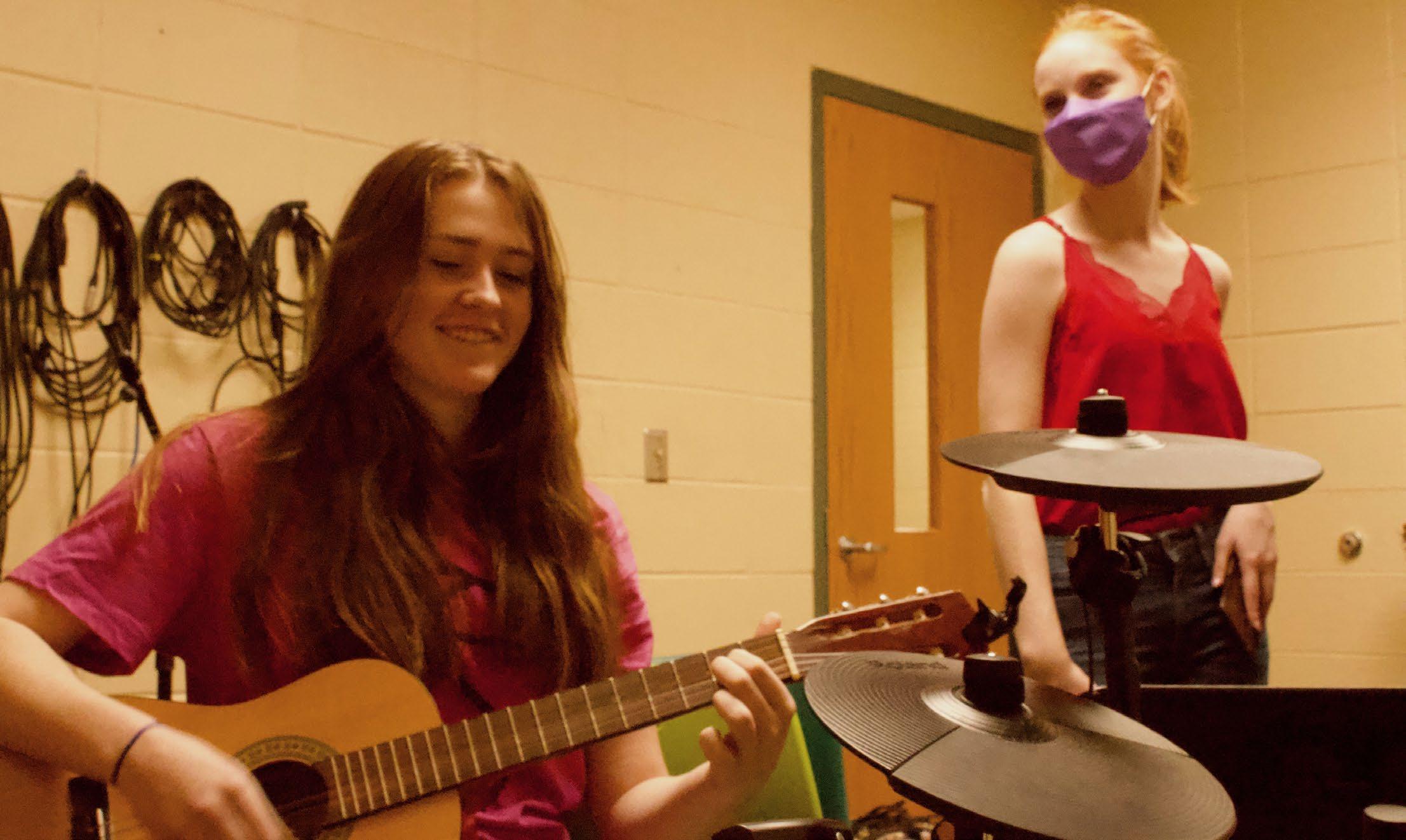
“For our band Citrus, we met through School of Rock and for our group The Pickles we met through songwriting class,” Wade said.
While the members of the new band, Citrus, hope it will go far, The Pickles is just a fun band to help the members practice and get to know music on a deeper level, Wade said. They have time to learn and improve in Songwriting class, where they can write songs and even record their own originals.
“[Songwriting class] makes it easier for [us] to communicate when it comes to mu sic because we all know the correct terminol ogy,” Wade said.
Although 40% of high school students participate in music classes, according to the University of Michigan, not everyone benefits from the structured environment of a class.
Senior Romeo Hedger is a ska enthusiast as well as a violin and bass player hoping
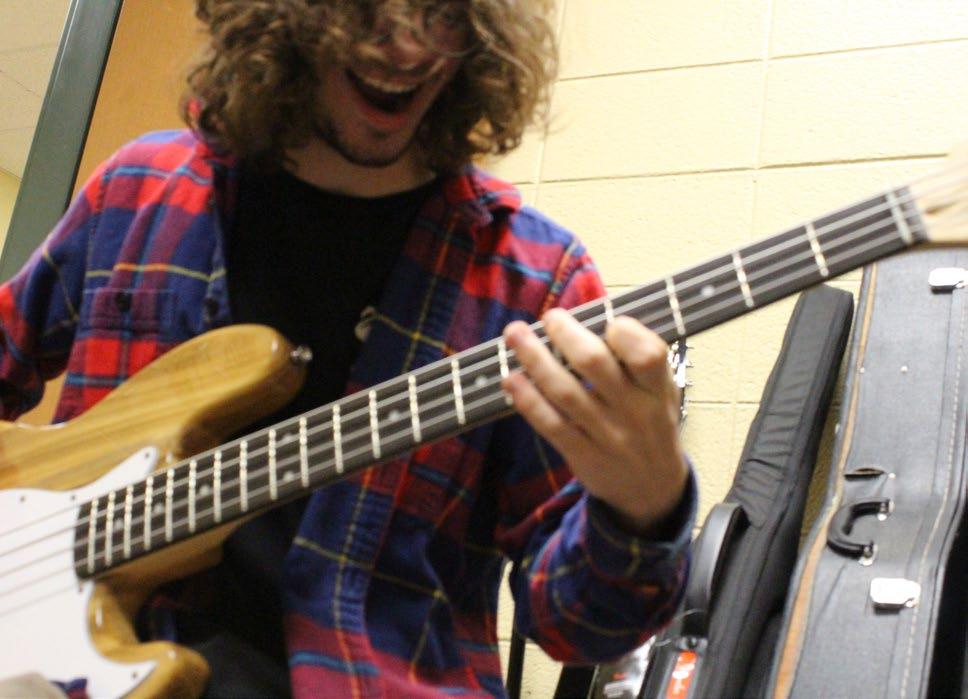
to play music professionally. Hedger said that while he enjoys orchestra and the violin, practicing the bass at home where there are no rules is more entertaining.
“I like to improvise a lot and make up a lot of what I’m doing on the spot when playing music,” said Hedger. “I incorpo rate that into my daily by being very open to randomly changing the plan to what best suits the situation.”
The music field requires intense passion and persistence, according to orchestra director David Schurger.
“You have to love it. Whether it’s teach ing or professional music,” Schurger said.
Even if you have the drive and the skill to be successful in music, money is a concern.
“I would very much like to [be a pro fessional musician], but I’d also like to eat consistently,” Hedger said.
But despite this gamble and the difficul ty of learning and becoming good at music, those who are up to the challenge will also gain some great relationships out of the
experience.
“It forces people to have something in common. It forces people to have a connec tion and it forces people to get to know each other better,” Wade said.
It takes time to succeed at the area of music desired, but once you have gotten there, it becomes an escape, something to look forward to doing at all times of the day, Hedger said.
“If you’re really passionate, you’ll find what your niche is,” Hedger said.
Every morning at 8:30, junior Chloe Poland drives to a salon in Lebanon to practice hair styling and coloring, makeup and massage skills.
This Cosmetology program is associated with the J. Everett Light Center, a program for students who want to specialize in certain careers such as law and medical occupations, automotive jobs, and many more, to gain first hand experience with a specific career path.
Cosmetology students like Poland work at the salon directed by trained instructors.
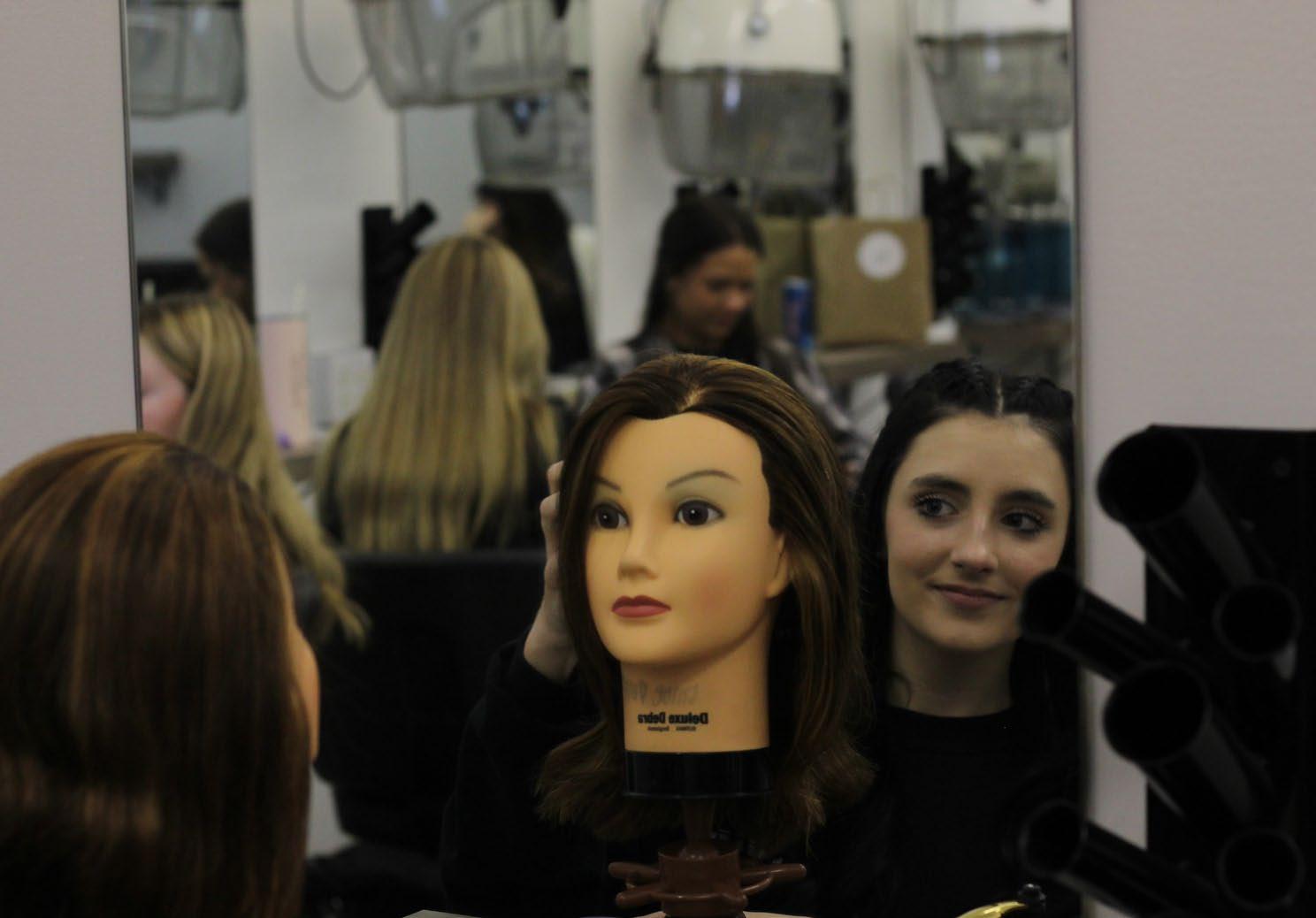
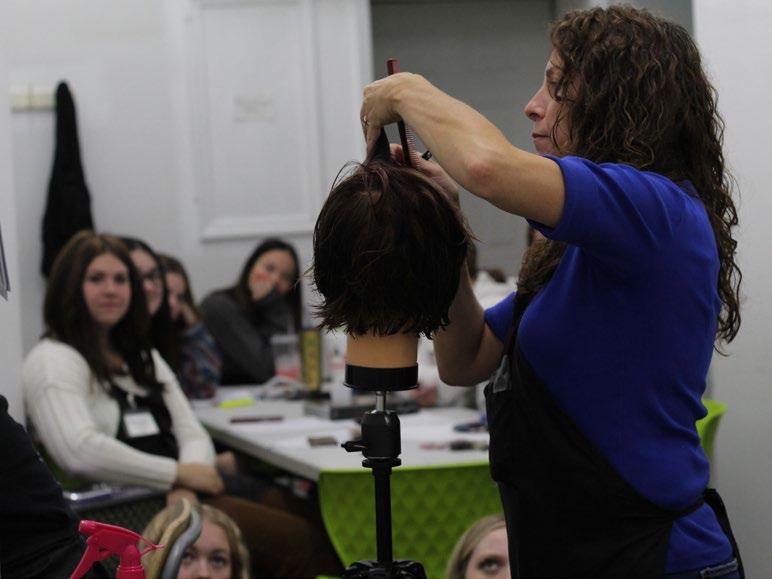
Mitzi Riddle, an instructor in the JEL cosmetology program, owns one of the salons that partner with the JEL program.
“When we first opened in 2006 we approached JEL to partner with us as an off-site campus. We had to be in business for two years before they would do it. After our two years of running smoothly they partnered with us,” Riddle said.
Riddle was introduced to cosmetology through her husband. He always wanted to open a school because he is a barber. He didn’t have time, so Riddle had to run it. Therefore, she had to get her cosmetology li cense and become an instructor. Since then, countless students have learned from her.
“I heard about [the program] through one of my mom’s clients but I also helped
for an English 12 class last year full of JEL students,” Poland said. “One of the students was in Cosmetology and she helped tell me all about it.”
Poland’s mother owns several cosmetic studios.
“If I’m being completely honest, I wasn’t really interested at first. My mom owns three cosmetology studios and as much as I love her, I wasn’t sure I wanted to follow in her footsteps,” Poland said.
What hooked Poland into the program was a client of her mother’s in the cosmetol ogy program.
“She came home and told me everything that this girl was learning and it all really fascinated me.”
Most JEL programs start around 8:30, but the cosmetology program tends to start earlier. The students have to log four hours a day, five days a week. The students also meet every morning during the first and second period. Some meet longer and others shorter.
“The mornings can be quite brutal but I promise it is worth it,” Poland said. “They let you take breaks and grab Star bucks if you’re falling asleep.”
Immediately, the students jump into learning makeup, hair, and massage skills.
“My favorite lesson so far is definitely hair coloring. I also enjoy learning how
to do texture services (perms and reverse perms),” Poland said. “It’s worth it because while your friends are sitting in math class, you’re either getting your hair done or doing someone else’s hair.”
Students from Zionsville, Lebanon, Car mel, Westfield, and many more participate in the JEL program. This creates new friend groups and relationships.
“I have really enjoyed meeting a bunch of girls from different schools. They are all so sweet,” Poland said. “I love my instruc tors too; they are so helpful! It’s so nice because I no longer have to waste so much money going to a salon.”
“My favorite part of being an instructor is that my students are with me for two years, if they complete the program,” Riddle said. “Just seeing them blossom into young adults and being able to support themselves when they graduate from school is the most rewarding part.”
Riddle has had many students through out her years of teaching cosmetology.
“To the students who want to be in the JEL program, no matter what program you’re picking, just being able to have some sort of certification or license and being in the trade industry is always great, especially since students are not going to college. If you’re a hard worker you can make great money doing hair,” Riddle said.
Instructor Mitzi Riddle teaches a workshop to her students. Photo by Lauren Burch“When I first had it, I was like, ‘Salad? What?’” freshman Lillian Steele said. “I still don’t understand why it’s called a salad.”
Every Thanksgiving, Steele’s grandmother, the matriarch of her family, brings with her this special, sweet dessert that looks far from a salad in appearance. Grandma Smith’s whipped cream salad is absolutely forbidden to the family any other time of the year.
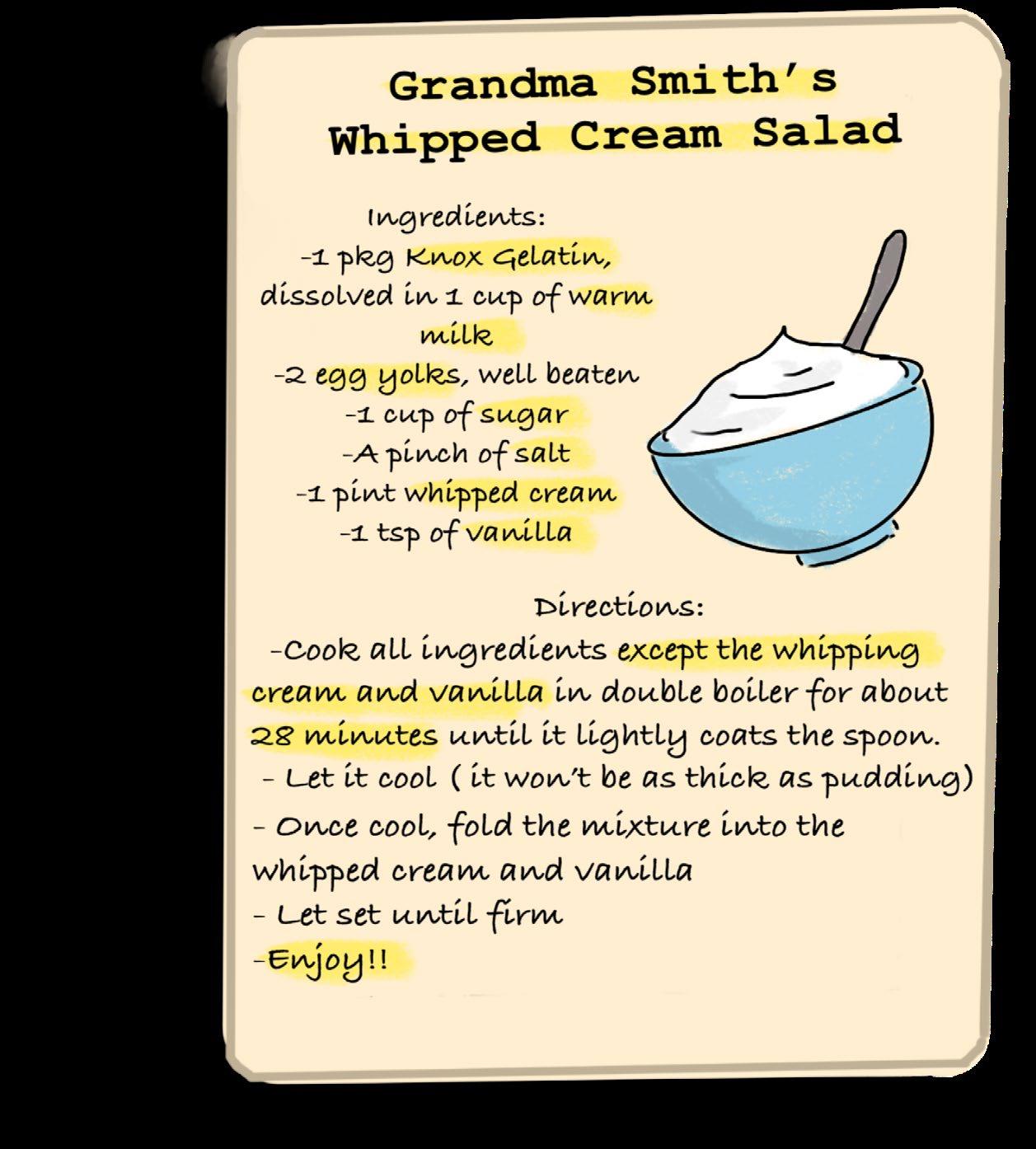
“It’s basically whipped cream and jello. It’s my great-grandmother’s recipe that she passed down,” Steele said. “It’s super hard to make because you have to get the texture right, but it’s really, really good.”
“My grandpa made his own chili recipe when he was younger and he was poor,” senior Lily Bass, said. “Actu ally, he named it after me; he called it ‘Lilly Chili’.”
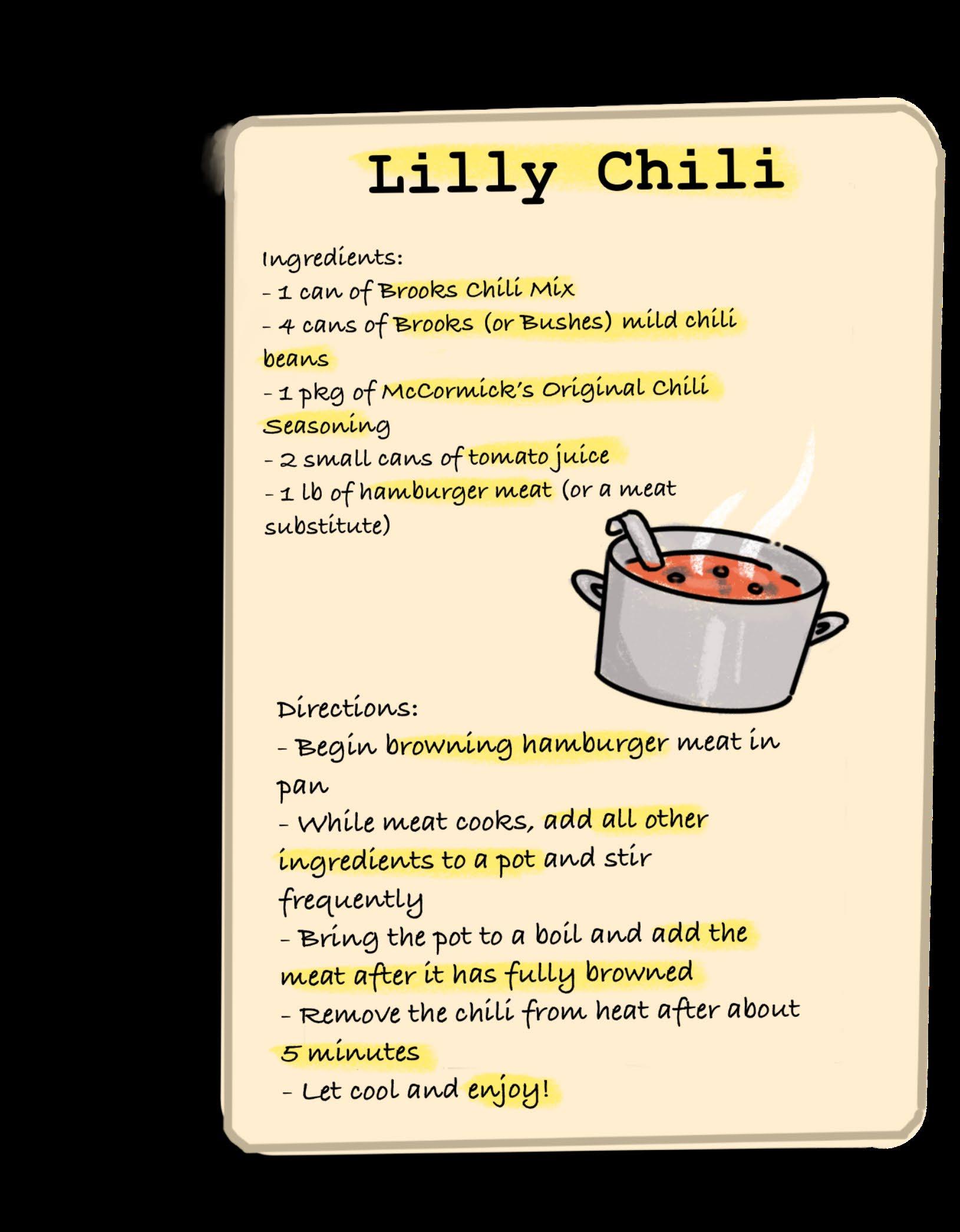
Although she helps her grandfather make the chili on occasion, her grandpa usually makes it to surprise Bass before she visits him.
“I guess it just kind of represents the bond that I have with [my grandpa],” Bass said. “It’s something that he’s been making for me since I was a little kid and it’s probably my favorite food.”
Junior Anderson Varner’s family celebrates their heritage with a traditional Lauaisian dish. His mom immigrated to America from Laos when she was 12 years old.
“It’s kind of a crazy story…[my mom] didn’t really know how to speak English,” Varner said. “It’s always been a big thing in our family [to celebrate] our roots or to think about your past and think about where you came from.”
Laap is a staple dish at the Varner family’s Christ mas dinner. It is made with chicken, cilantro, green onion, fish sauce, and soy sauce and is meant to be eaten with some sticky rice or a leaf of lettuce.
 Photo submitted by Anderson Varner
Photo submitted by Anderson Varner
Senior Lucy Gregory’s family has been making their holiday dessert for four generations.
“[The dessert] is my family’s own recipe. It’s called the heath bar dessert.” Gregory said. It’s made with a graham cracker crust, pistachio pudding, cool whip, and crushed up heath bars.
“The heath bar dessert is particularly special to me because my great grandparents grew up in a time where it was not normal to have an abundance of money if you lived in the Midwest. They just kind of put together what they had, which was pudding, cool whip, and crushed up candy bars,” Gregory said, “My grandma still has the orig inal recipe… it’s all stained and crumpled. It’s just kind of fun to see how generations can affect one another.”

[It’s} an international film festival for high schoolers. It’s the largest high school film festival around the world. They take around 2,000 submissions and then those submissions are screened at the AMC theater in Times Square between Saturday and Sunday. There’s a bunch of different screening blocks. They also have networking events, and of course, a red carpet award ceremony event.
In my first film I used my mom’s 10-year-old DSLR camera. Not a lot of bells and whistles. You could barely shoot video. We had to do so much research, and I felt like I didn’t knoww anything that I was talking about.
Winters on the red carpet for the All-American High School Film Festival in October. Photo submitted by Sophia Winters
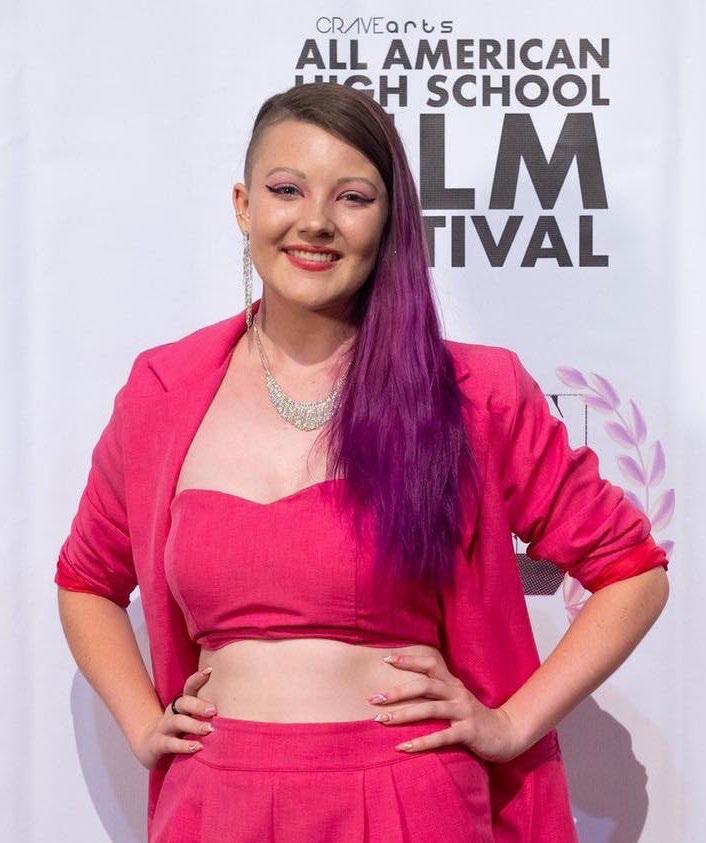
In filmmaking, there’s a lovely little website called filmfreeway.com. This is how you get into film festivals. You can actually say you’re looking for this category or on this date you can list a price range or loca tion. That’s how I found all the other film festivals that I’ve entered. So it’s really great source. So I found it freshman year. I spent the next year and a half, two years, creating a film to finally submit.
By the time we were filming “GamePlan” I had a whole new camera. A brand new cinema camera Blackmagic. We rent a lot of the equipment that we use, but the camera and the microphone, I’m proud to say are mine. I named him Victor.
I cast through Backstage, which is a pro fessional casting website. I list my film and the role that I’m looking for, and I will have applicants apply. Every time I get applicants from the Netherlands and the UK and I don’t know why. It’s not a paid position.
[I want to] Hopefully [get] a BFA in filmmaking. Several people in the industry have told me ‘don’t waste your money on film school.’ But I don’t know everything. I’m just a baby in the film world.
My lifelong dream would be [to be] a filmmaker in New York City, specifically a film editor. A film editor is a person that takes all the different footage and puts it all together. It’s like putting together the pieces of a puzzle. Hopefully for the future I want to make films [as well]. Even if I want to focus on editing, directing and writing is still super important to make sure people are still seeing your name and you still feel seen as an artist.
Gravity, On the Waterfront and Jojo Rabbit
“Game Plan” is a story about the blurred lines between business and friendship, and how those two intertwined into a huge tangled mess, with a little bit of female empowerment thrown in there.


Senior Sophia Winters’ passion for filmmaking has taken her all the way to Times Square, walking the red carpet at the AMC All-American High School Film Festival
How did you discover and get into this event?
What is the All-American High School Film Festival?
Since when does the average teen resem ble Cassie Howard from “Euphoria”?
Many teenagers, myself included, are overwhelmed with the overexaggerated and oversexualized portrayals of teen in media.
The teens that you see on TV never seem to go through an awkward teenage phase. The teenagers that you see on shows such as “Euphoria” and “Riverdale” are not actually teenagers in real life. The actors playing those teens range from their mid 20s to their early 30s.
Senior and Film Lit student Raymie Hendry agrees that adults portraying teens in media is harmful to the accurate repre sentation of teens today.
“Teenagers, in general, are pretty awkward in terms of actions and looks,” Hendry said.”We have acne and bad hair days, which aren’t portrayed in film. So instead of seeing accuracy, you get a skewed perception of what adolescence looks like.”
Unrealistic portrayals of teenagers are nothing new; it’s been a common tactic in entertainment for years. However, nothing has improved.
Everywhere you look, whether it be ads in store windows or movie trailers, teen agers are glamorized in the media and in Hollywood, setting high expectations for teenage appearance. I find that teens in film and media have little to no blemishes and oversexualized figures, among other issues.
Not only does this facade striptake away the realistic teenage image, but it creates insecurities and the idea that you have to be exactly like the on-screen character to be happy.
“It’s extremely unsettling because when I would see high school characters on TV with such mature figures and curvy bodies I was like ‘Is this what I’m supposed to look like?’” Hendry said. I became really self-doubting and compared the characters to myself. I couldn’t finish the movies. We’re the same age, right, so why do we
look so different?”
Overexaggerated portray als of teens don’t just end at how the actors look. Shows such as “Euphoria”, where many of the main characters engage in sex and drug use are far off from how the typical high schooler behaves.
“Obviously we know it’s fiction both in film and media,” English teacher Elena Cut ter said. “But we’re manipulated to believe that on a subconscious level, it’s a standard or an image to uphold that teens and even adults act that way.”
Of course, most of the content in film and media is exaggerated to create engaging content for young viewers to enjoy. After all, do most of us really want to watch a show involving two friends randomly hanging out with no context? I know I sure wouldn’t.
I can understand copying the style of Maddy Perez or the morning routine of Cassie Howard in “Euphoria”, but mim icking their behavior or actions simply to appeal to society’s standards seems strange and problematic to me.

While there is controversy surrounding adults portraying adolescents, is it okay when the the tables are turned?
Sophomore and lead in the fall production, “Legally Blonde”, Claire Kauffman doesn’t feel uncomfortable taking on an adult role and rather sees the portrayal of Elle Woods as entertain ing and fun.

“Elle is far different then any charac ter I’ve played before,” Kauffman said. “I’m used to portraying characters closer to my age so getting to put myself in the shoes of someone so strong and smart was really fun.”
Even though a character as upbeat and iconic as Elle Woods makes for a great entertaining portrayal there are a few
challenging aspects that come with depict ing an adult character.
“I’m not in college and I’ve never fought a case before so it’s hard to relate to the character and figure out how I can make Elle Woods come to life,” Kauffman said.
Aside from the age gap between the character and the actor, I find that there’s nothing too controversial revolving the adult portrayal of teens. A majority of teens already act older then their actual age, though not to the Hollywood extent of exaggeration.
We can’t change the cast list, the script, or the way the characters we see are por trayed, But, we don’t have to change our ap pearance or behavior based off an on-screen teen. It’s important that we as teenagers learn be comfortable in our own skin and not feel pressured to play the part of the adult adolescent.

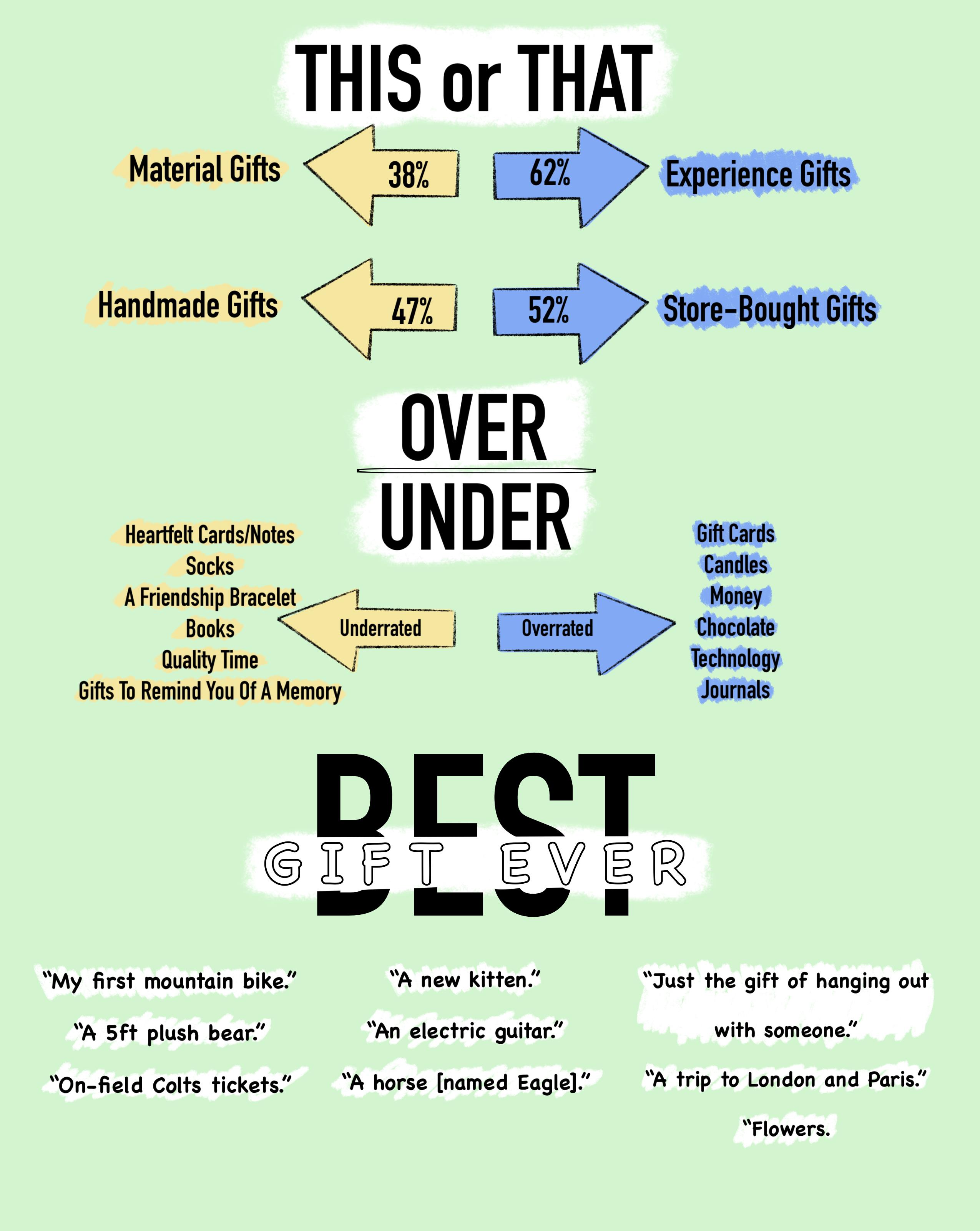
Top

Bottom Left: Freshman Owen Couchman plays “The Light of Dawn” at the All-Region Band concert on Nov. 13. Photo by Madeline Wilson

Right: Juniors Nina Abel, Isabel Casciani, and Savannah McCarthy rehearse for Legally Blonde on Nov. 16. Photo by Brooklyn Brown
